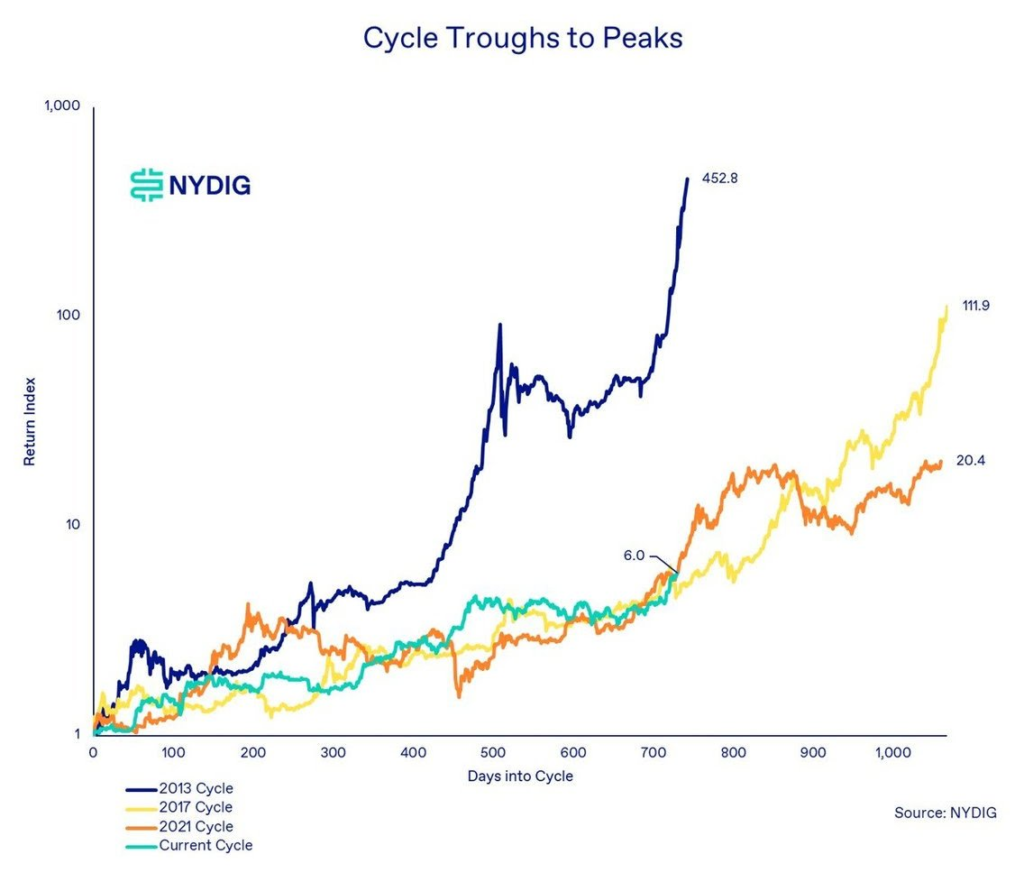-
Bitcoin approached $100,000, facing challenges from manipulative tactics like Bitcoin spoofing.
-
Spoofing deters new investors, hindering innovation in Africa’s blockchain sector.
-
Profit-taking behaviors among Bitcoin traders, particularly when unrealized profits reach record highs, can cause market fluctuations exacerbated by spoofing.
As Bitcoin neared $100,000 for the first time, traders faced an unexpected hurdle: Bitcoin spoofing.
This manipulative tactic has emerged as one of the primary factors shaping cryptocurrency price movements globally and within Africa; understanding its effects is paramount for financial inclusion across Africa.
This article unravels the mechanics, consequences, and defenses against Bitcoin spoofing while weaving in insights on crypto liquidity tactics, analyzing unrealized profit trends in crypto, and explaining how to protect crypto investments from spoofing.
Understanding Bitcoin Spoofing: A Critical Factor in Price Movements
Bitcoin’s struggle to breach $100k illustrates market forces colliding with manipulative practices like “Bitcoin Spoofing.”
Recently, large sell orders have been strategically placed in trading sessions just below this psychological barrier, prompting automated trading bots to liquidate holdings at lower prices, resulting in an unpredictable downward spiral for Bitcoin prices.
CHECK OUT: Can Bitcoin-linked assets transform your African investment future?
This scheme is often combined with other crypto liquidity tactics like wash trading, amplifying price swings, and eroding trust within the industry. This particularly affects Africa, which is known for its small but numerous traders.
Spoofing can discourage new investors from entering cryptocurrency-related ventures altogether – ultimately hampering innovation and expansion within Africa’s rapidly developing blockchain space.
According to the data, when BTC neared $99,800, spoofed sell walls caused a temporary 8% price drop, wiping out $443 million in unrealized profits.

Bitcoin cycle comparison. [Photo: Cubic Analytics]
Demystifying BTC Spoofing and How to Detect Crypto Spoofing Orders
To understand BTC spoofing, diving deep into its mechanics is necessary.
At its core, this practice involves placing large orders quickly canceled before execution, creating the impression of demand or supply that misleads other traders about market conditions.
They essentially appear when large sell orders appear close to critical support levels like $100K, leading them to activate trading algorithms designed to react swiftly and predictably to perceived shifts in supply and demand; such reactions often lead to greater price instability in Bitcoin (BTC) prices.
To detect crypto spoofing orders, traders typically:
- Monitor order-book anomalies: Look for large, fleeting orders placed away from typical price levels.
- Use real-time analytics: Platforms flag rapid order cancellations or “ghost” liquidity.
- Cross-check volume sources: Verify that reported volume matches on-chain settlements.
Implementing these practices on regulated exchanges with anti-spoofing detection tools can reduce false positives and keep you one step ahead. This approach excelled for B2B sites; e-commerce may differ—so tailor your workflows accordingly.
The impact of spoofing on BTC price stability
Unrealized profit levels jumped 57% last quarter, reaching near historical peaks that have previously caused corrections, something many analysts are closely keeping track of today.
Market sentiment often pivots on profit realization. By Analyzing unrealized profit trends in crypto, you can anticipate turning points.
For instance, Glassnode said hourly realized profits surged to $139.9 million—17% above baseline—during the latest relief rally, signaling heavy profit-taking pressure.
Profit-taking activities intensify amid concerns over market stability caused by BTC spoofing.
In addition, one must understand how spoofing affects altcoin prices. Bitcoin has a rippling effect throughout the market. Thus, fake buy walls often send smaller-cap assets on unsustainable pumps, leading to losses for unprepared traders.
Also, thinly traded altcoins can crash by 20% or even 30% in minutes once orders vanish, completely eroding confidence in emerging tokens.
Therefore, to detect crypto spoofing orders, it becomes ever more crucial for African investors to develop effective strategies to weather these fluctuations effectively.
Investors should diversify their portfolios within exchanges with transparent volume metrics to protect crypto investments from spoofing. Furthermore, layered defense strategies like:
- Leveraging on blockchain analytics to validate execution on chain.
- Diversify across assets and trading strategies to reduce concentrated risk.
- Set alerts for abnormal order-cancellation ratios or sudden liquidity shifts.
Beyond the Noise: How Spoofing and Growth Trends Shape the Future
Despite current market manipulation challenges, optimistic projections for Bitcoin remain widespread among analysts.
African blockchain innovators can capitalize on this projected growth to meet community needs with local solutions tailored specifically for them.
Though challenges such as liquidity manipulation might appear intimidating at first, they provide unique chances to develop decentralized financial services that prioritize transparency and inclusivity.
Africa can use innovative strategies rooted in education and awareness of market manipulation to turn obstacles into opportunities, creating an ideal setting for sustainable digital economic growth.
Understanding how Bitcoin spoofing, profit-taking behaviors, and crypto liquidity tactics impact the overall market is fundamental for Africa’s crypto community as a whole.
African innovators have an opportunity to contribute positively to creating a resilient blockchain ecosystem across Africa. We can accomplish this by understanding concepts such as liquidity provisioning and campaigning against harmful manipulation.
Disclaimer: This article is for informational purposes only and should not be considered financial advice. Readers are encouraged to research and consult a financial advisor before making investment decisions.

